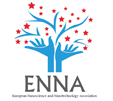Near infra-red responsive nano-platform for gene knockdown in breast cancer
Uzma Azeem Awan * Steven Hira, Shaukat Ali, Abida Raza and Mostafa El Sayed
National University of Medical Sciences (NUMS), Pakistan
Georgia Institute of Technology, United States
National Institute of Laser and Optronics (NILOP), Pakistan
Government College University Lahore, Pakistan
: J Nanomater Mol Nanotechnol
Abstract
Nanomaterials and advanced nanotechnologies have sped up the creation of new biomedical protocols. Nanoparticle-mediated distribution of nucleic acids has been proposed as a major tool for modulating gene expression, whether by targeted gene silencing, interfering RNA mechanisms, or gene edition. Because of the ability to fine-tune their size, shape, and surface properties, as well as the ease of functionalization with different biomolecules, these novel delivery systems have heavily relied on nanoparticles. In particular, gold nanoparticles (AuNPs) have paved the way for efficient delivery systems as they have a unique light-toheat conversion property that can be used to develop new and effective cancer therapeutics. Breast cancer is still the most commonly diagnosed cancer in women worldwide, putting their lives at danger. Nanomedicine, fortunately, has introduced new potential and hope to breast cancer research. Abnormally elevated expression of cyclooxygenase-2 (COX-2) has been frequently observed to regulate tumor growth, invasion and metastasis in breast cancer tissues. COX-2 selective and non-selective inhibition causes several adverse effects like renal, cardiac and gastrointestinal toxicity. Herein, we provide a nano-platform made up of gold nanoparticles that conjugate and release COX-2 interfering oligos when illuminated with a near-infrared (NIR) continuous wave (CW) laser (808 nm) to precisely reduce endogenous COX-2 expression in breast cancer cells. Using gold nanoparticles coupled oligos followed by NIR laser exposure, the COX-2 protein expression level was considerably (p0.05) reduced by 78 percent after 72 hours when compared to their untreated counterpart. The effectiveness of gene silencing utilizing nanoparticles coupled with oligos without laser exposure was 36%. The decrease in protein level in NIR-activated cells against control sample demonstrates that NIR induced nano-platform has effectively interfered with COX-2 protein expression. Our findings highlight the promise of gold nanoparticle-mediated laser transfection as a gene interfering technique with spatial and temporal control, as well as a unique molecular therapeutic approach for the treatment of breast cancer.
References:
1. Chadar R, Afsana, Kesharwani P. Nanotechnology-based siRNA delivery strategies for treatment of triple negative breast cancer. Int J Pharm. 2021 Aug 10;605:120835. doi: 10.1016/j.ijpharm.2021.120835. Epub 2021 Jun 28. PMID: 34197908.
2. Jones, S., Merkel, O. Tackling breast cancer chemoresistance with nano-formulated siRNA. Gene Ther 23, 821–828 (2016).
3. Swaminathan G, Shigna A, Kumar A, Byroju VV, Durgempudi VR, Dinesh Kumar L. RNA interference and nanotechnology: A promising alliance for next generation cancer therapeutics. Frontiers in Nanotechnology. 2021 Jun 9;3:42.
Biography
Dr. Uzma Azeem Awan, working as Assistant Professor at the Department of Biological Sciences National University of Medical Sciences (NUMS), Rawalpindi, Pakistan since 2018. She did her PhD (2017) from University of Azad Jammu and Kashmir, Muzaffarabad, and had completed research project from Nuclear Medicine Oncology and Radiotherapy institute (NORI-PAEC), Islamabad and Georgia institute of Technology, USA majoring in Nanomedicine with specialization in Cancer Nanotheranostics. Her research has included fabrication of nanomaterials and their biomedical applications in the field of cancer. She has been awarded with 4 research projects She has published 13 research articles, 3 review articles and 5 book chapters. Besides teaching she has presented her research work at various national and international forums. She is serving as a reviewer of several reputed journals like British Medical Journal. She is a member of American Chemical Society.
 Spanish
Spanish  Chinese
Chinese  Russian
Russian  German
German  French
French  Japanese
Japanese  Portuguese
Portuguese  Hindi
Hindi 



